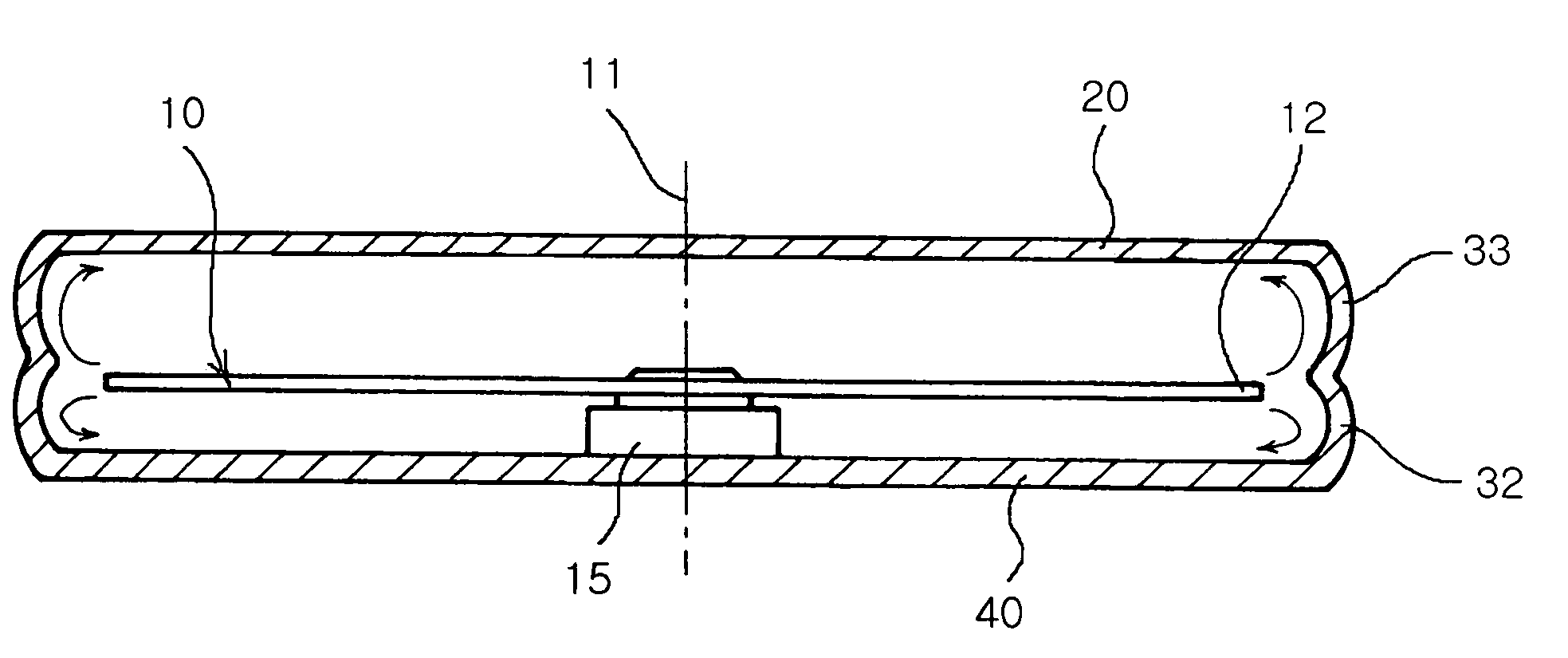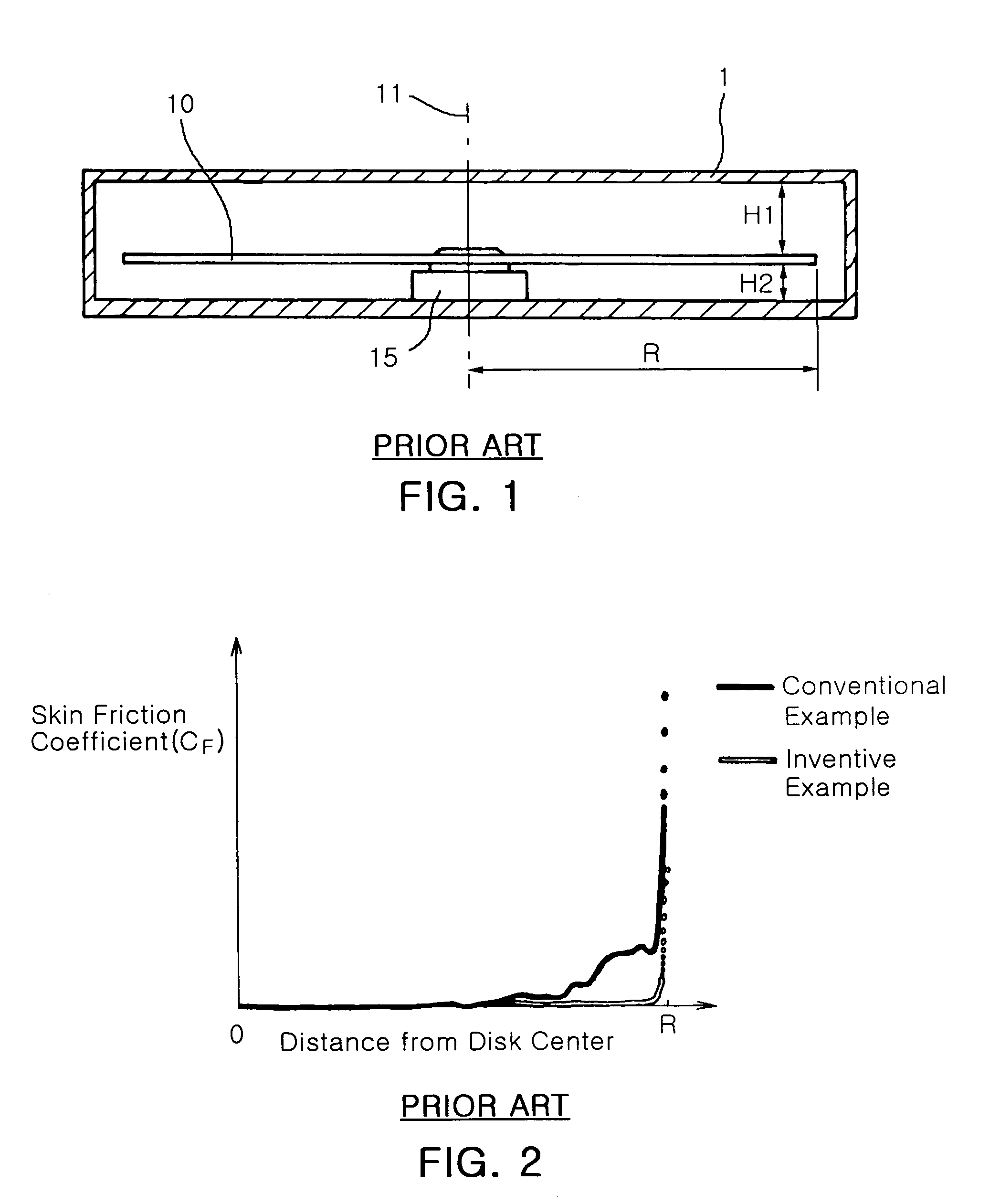Optical storage capable of reducing power consumption
a technology of optical storage and power consumption, applied in the field of optical storage capable, can solve the problems of increasing power consumption, strong turbulence, flow resistance, etc., and achieve the effects of reducing power consumption, reducing the integrated value of skin friction coefficient, and reducing flow resistan
- Summary
- Abstract
- Description
- Claims
- Application Information
AI Technical Summary
Benefits of technology
Problems solved by technology
Method used
Image
Examples
Embodiment Construction
[0049] Preferred embodiments of the present invention will now be described in detail with reference to the accompanying drawings.
[0050]FIG. 4A is a cross-sectional view illustrating a cover of a housing according to the present invention, FIG. 4B illustrates a modification to the housing shown in FIG. 4A, FIG. 5A is a cross-sectional view illustrating a shroud of a housing according to the present invention, FIG. 5B illustrates a modification to the housing shown in FIG. 5A, and FIG. 6 is a cross-sectional view illustrating bumps mounted on a base of a housing according to the present invention.
[0051] First, the cover structures will be described with reference to FIGS. 4A and 4B.
[0052] As shown in FIG. 4A, a disk 10 is received within a housing including a cover 20 as the top of the housing, a shroud 30 as the side wall of the housing and a base 40 as the bottom of the housing. A drive unit 15 is mounted on the base 40 to turn the disk 10 around a drive axis 11.
[0053] In the c...
PUM
| Property | Measurement | Unit |
|---|---|---|
| angle | aaaaa | aaaaa |
| angle | aaaaa | aaaaa |
| diameters | aaaaa | aaaaa |
Abstract
Description
Claims
Application Information
 Login to View More
Login to View More - R&D
- Intellectual Property
- Life Sciences
- Materials
- Tech Scout
- Unparalleled Data Quality
- Higher Quality Content
- 60% Fewer Hallucinations
Browse by: Latest US Patents, China's latest patents, Technical Efficacy Thesaurus, Application Domain, Technology Topic, Popular Technical Reports.
© 2025 PatSnap. All rights reserved.Legal|Privacy policy|Modern Slavery Act Transparency Statement|Sitemap|About US| Contact US: help@patsnap.com



